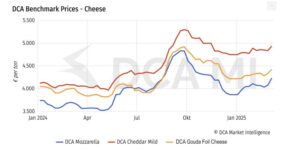Why is milk so popular among us historically? It is easily accessible, a rich source of protein and calcium. A 240 ml cup of cow’s milk contains about 160 calories and 7.7 g protein (casein 80 per cent, whey 20 per cent), 12 g sugar and 8 g of (mostly saturated) fat. Buffalo milk is thicker, contains 100 per cent more fat and almost 40 per cent more calories than cow’s milk. The challenge with whole milk is its saturated fat content, which is thought to be bad for the heart, although recent studies on whole milk suggest otherwise.
Milk from which fat has been partially removed is lower in calories while skimmed milk has zero fat and only 80 calories in 240 ml. Given these properties of milk, is it a suitable drink for people with diabetes?
MILK AND DIABETES
Milk will raise your blood sugar levels, although whole milk raises them slightly slowly due to its fat and protein content. On the other hand, the total calorie content of whole milk is higher, so keep that in mind.
However, recent studies have shown that total dairy product, yogurt and whole milk consumption is associated with an 11-17 per cent decreased risk of developing Type 2 diabetes. Dairy products have high protein – in particular, whey protein — and that has beneficial effects on glucose metabolism and body weight. Probiotics in dairy like yogurt could also have a favourable influence on metabolic health. Besides, milk contains bioactive peptides and fatty acids that could help lower blood pressure and control diabetes. More recently the global PURE study showed a reduced cardiovascular risk with consumption of whole fat dairy, including in Indians.
ALTERNATIVES FOR LACTOSE-INTOLERANT
Lactose, the sugar in milk, needs to be broken down in the gut by the enzyme lactase, which is commonly deficient in Asian adults. Milk proteins like casein can also cause allergies.

Almond milk: It is lower in calories and protein than cow’s milk and has less saturated fat. One cup or 240 ml contains 40 calories, 1 g protein, 3 g fat, 2 g carbs (no sugar), and variable amounts of calcium. A good choice for people with diabetes provided they have alternate protein sources and calcium-fortified foods.
Soy milk: It is high in protein, low in calcium and comes fortified. A 240 ml cup contains about 80-100 calories, 7 g protein, 4-6 g fat, 4 g carbs and about 60 mg calcium.
Oat milk: A cup of oat milk (240 ml) gives us 120 calories, along with 3 g protein, 5 gm fat, 16 g carbs (7 gm sugar) and 350 mg calcium. It provides more calories than other plant milks and is not advised for those with diabetes.
Coconut milk
Coconut milk is a fat and calorie rich-plant milk. A 240 ml cup of unsweetened coconut milk provides 552 calories, 5.5 g protein, 57 gm fat, 13 g carbs and 38 mg calcium. It has high levels of saturated fat, along with medium chain triglycerides (MCT). It has been suggested that MCTs reduce abdominal fat and inflammation. But best avoided by people with diabetes.
Other varieties of plant derived “milk” are becoming popular — hemp (ganja) milk, millet milk, cashew milk, walnut milk. But do talk to your doctor/nutritionist before choosing them. And please read the label carefully for additives, including sugar, before doing so.





